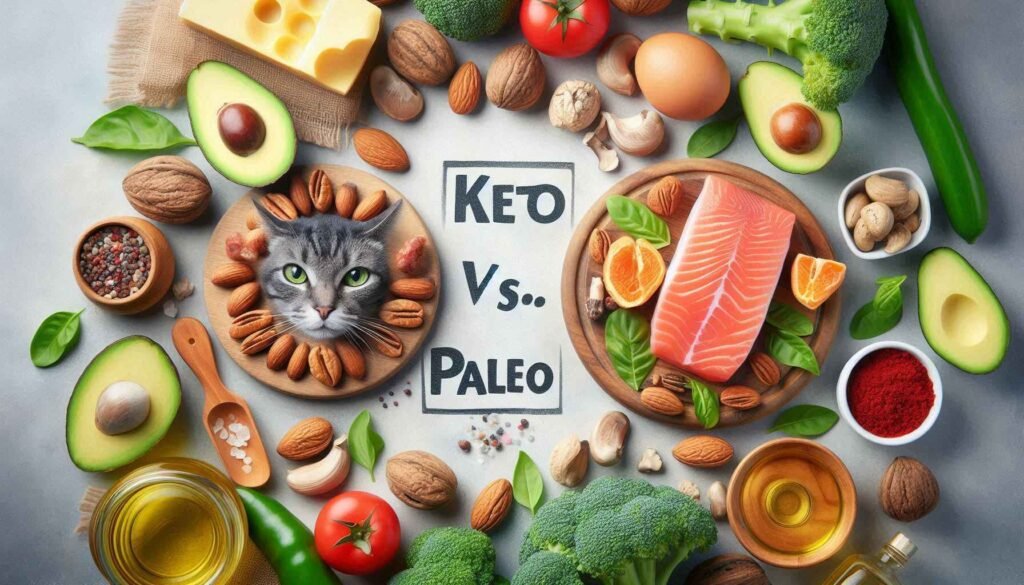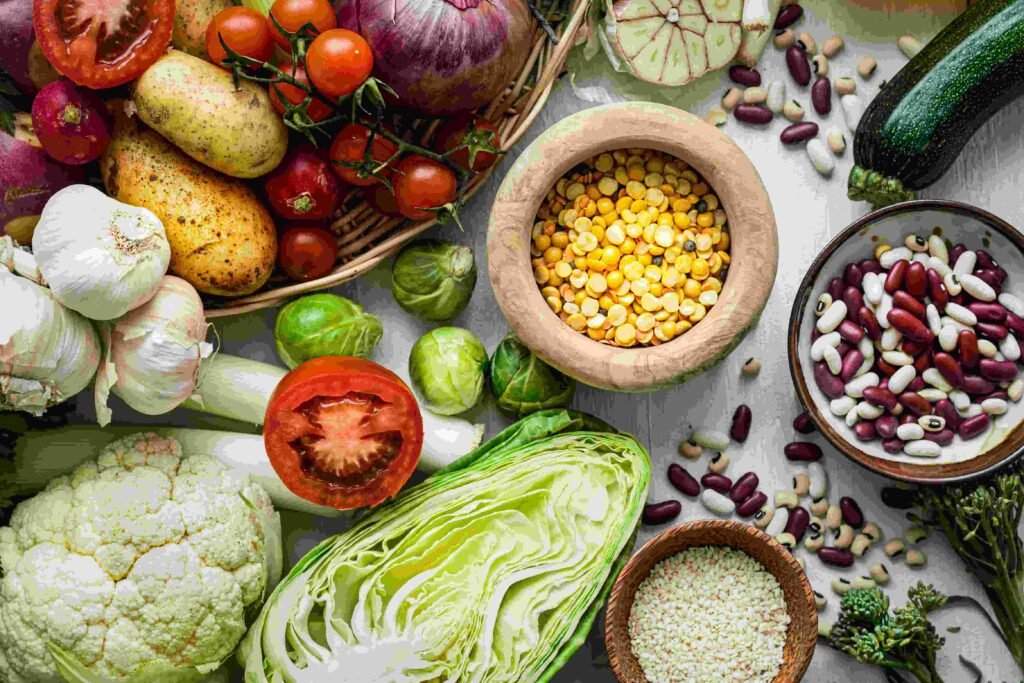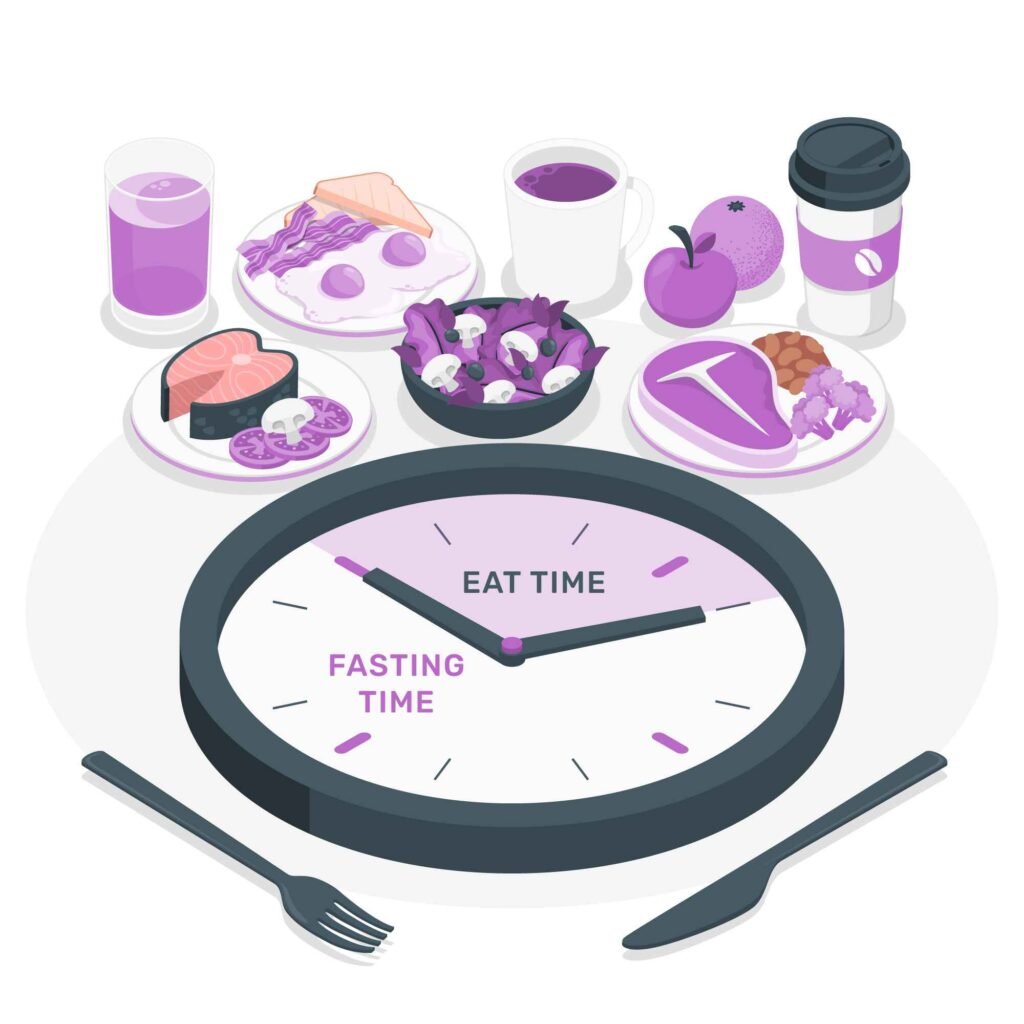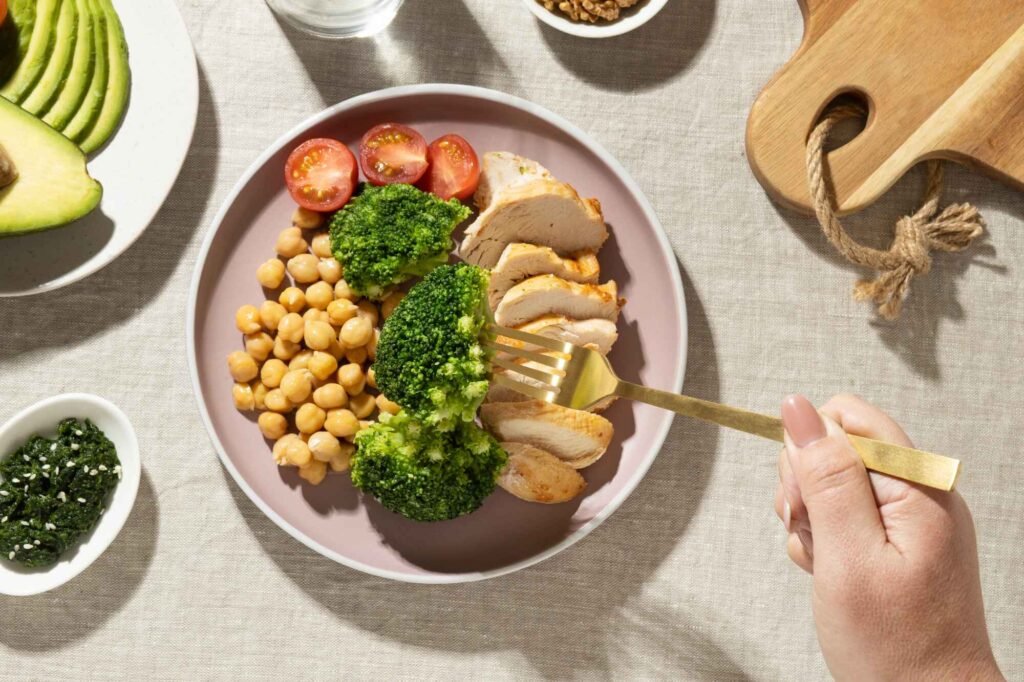
Keto vs. Paleo: Which Diet is Right for You?
Choosing the right diet for your health and lifestyle can be challenging, especially with so many popular diets to choose from. Two that have gained significant attention in recent years are the Keto and Paleo diets. Both promise weight loss, improved health, and a better relationship with food. However, how do they compare, and which one suits you best?
This guide explores the details of both diets, including their benefits, drawbacks, and differences. By the end, you will have a clearer idea of which diet fits your goals and lifestyle.
What is the Keto Diet?
The Keto diet is a low-carb, high-fat eating plan. Its main aim is to change the body’s energy source from glucose (sugar) to fat. When you consume very few carbohydrates, the body eventually enters ketosis. In this state, the liver converts fat into ketones, which are used as energy instead of glucose.
How Keto Works
Keto reduces carbs to about 5-10% of your daily calories—around 20-50 grams per day. Fat becomes the main nutrient, comprising 60-80% of the diet, with protein filling the rest.
Benefits of the Keto Diet:
- Weight Loss: The body uses fat for energy, which often leads to significant weight loss. This can be especially effective in the beginning as glycogen stores are depleted and fat is broken down.
- Improved Insulin Sensitivity: Keto helps improve insulin sensitivity. Therefore, it’s a popular choice for people managing type 2 diabetes or trying to prevent metabolic problems.
- Brain Health: Ketones provide an efficient energy source for the brain. As a result, the Keto diet helps manage epilepsy and other neurological conditions.
Drawbacks of the Keto Diet:
- “Keto Flu”: Many people experience symptoms like headaches, fatigue, and irritability during the first week, often called “Keto flu.” This happens as the body adapts to burning fat instead of carbs.
- Heart Health Concerns: The diet’s high-fat content can lead to increased saturated fat intake. Consequently, some studies link this to higher cholesterol, raising the risk of heart problems if not managed well.
- Restricted Variety: Keto restricts many foods, including fruits, starchy vegetables, and whole grains. This can result in a lack of food variety and potential nutrient deficiencies.
What is the Paleo Diet?
The Paleo diet, also known as the “caveman diet,” focuses on eating like our ancient ancestors. It promotes whole, unprocessed foods that could be obtained by hunting or gathering.
How Paleo Works
The Paleo diet includes lean meats, fish, vegetables, fruits, nuts, and seeds. It excludes foods that emerged after the agricultural revolution, like dairy, grains, legumes, and processed sugars. The idea is that our bodies are better adapted to these natural foods and that eating in this way helps optimize health.
Benefits of the Paleo Diet:
- Focus on Whole Foods: Paleo emphasizes whole, unprocessed foods. This approach naturally reduces refined sugar and unhealthy fats, which leads to better digestion and lower inflammation.
- Weight Loss: By avoiding processed foods and focusing on lean proteins and vegetables, many people lose weight on Paleo and maintain a healthier lifestyle.
- Blood Sugar Control: Eliminating processed carbs helps stabilize blood sugar levels. As a result, the risk of insulin resistance and energy crashes decreases.
Drawbacks of the Paleo Diet:
- Nutrient Limitations: Avoiding legumes, grains, and dairy may lead to deficiencies in fiber, calcium, and vitamin D if other nutrient sources are not adequately replaced.
- Cost and Accessibility: Paleo encourages organic produce and grass-fed meats, which can be expensive and harder to find.
- Debate on Historical Accuracy: Critics argue that early humans had diverse diets based on their environment, and modern interpretations might not fully represent those differences.
Key Differences Between Keto and Paleo
- Carbohydrate Intake:
- Keto: Requires extremely low carbohydrate intake to reach ketosis. This means eliminating nearly all starchy vegetables, most fruits, and all grains.
- Paleo: Allows moderate carbohydrates from natural sources like fruits and vegetables. The Paleo diet does not require a specific limit.
- Philosophy:
- Keto: Focuses on macronutrient ratios. The goal is to achieve ketosis by tracking and adjusting carbs, fats, and proteins.
- Paleo: Emphasizes food quality. It encourages eating whole, nutrient-rich foods without specific macronutrient targets.
- Food Restrictions:
- Keto: Permits high-fat dairy like cheese and butter, while sweeteners are limited to alternatives like stevia.
- Paleo: Excludes all dairy and sweeteners. It aims for a diet that aligns with natural and ancestral eating habits.
Pros and Cons of the Keto Diet
Pros:
- Rapid Weight Loss: By using fat for energy, the body often loses weight quickly, especially in the initial phase.
- Benefits for Neurological Health: Keto can be beneficial for those with neurological conditions, as ketones fuel the brain efficiently. Improved mental clarity and focus are common.
- Reduced Appetite: High-fat and protein-rich foods can help control hunger and reduce the desire to snack.
Cons:
- Difficult Adjustment: The initial phase can be tough as the body adapts to using fat instead of glucose.
- Not Suitable for Everyone: The high-fat content may pose risks for individuals with cardiovascular issues, especially if saturated fats are consumed in excess.
- Potential Nutrient Deficiencies: Keto’s restrictions can lead to gaps in fiber, vitamins, and minerals if the diet isn’t carefully balanced.
Pros and Cons of the Paleo Diet
Pros:
- Emphasis on Quality Nutrition: The diet promotes nutrient-rich foods, such as fruits, vegetables, and lean proteins, which support overall health.
- Avoidance of Processed Foods: Eliminating processed and sugary foods helps reduce inflammation and maintain stable blood sugar levels.
- Greater Flexibility: Paleo allows a variety of fruits and starchy vegetables, making it easier to stick to and sustain over time.
Cons:
- Nutrient Restrictions: Excluding grains, legumes, and dairy might lead to deficiencies in calcium and other nutrients if substitutes aren’t incorporated.
- Potential Cost: Grass-fed and organic products can be expensive, making the diet challenging to afford consistently.
- Limited Research: Long-term research on Paleo is limited compared to other balanced diets, such as the Mediterranean diet, which has more established health benefits.
Which Diet is Right for Weight Loss?
Both the Keto and Paleo diets can promote weight loss, but the effectiveness and sustainability vary based on personal preferences and lifestyle:
- Keto Diet: Rapid weight loss occurs due to carbohydrate restriction and increased fat metabolism. However, weight loss can plateau if the diet becomes repetitive.
- Paleo Diet: Weight loss on Paleo may be slower but more sustainable because it allows more food variety and emphasizes whole foods. This approach helps reduce calorie intake without focusing solely on macronutrient ratios.
Is One Diet Easier to Maintain?
Keto: Maintaining the Keto diet can be challenging, especially with its strict carbohydrate restrictions. Social situations and dining out can be particularly difficult.
Paleo: Paleo may be easier for many because it allows a broader range of foods. The emphasis is on whole foods rather than specific macros, offering more flexibility and variety.
Who Should Choose Keto?
- For Rapid Weight Loss: Keto is ideal if your primary goal is to lose weight quickly. The body burns fat more effectively in ketosis, leading to faster results.
- For Neurological Conditions: Keto has been used to manage epilepsy and improve neurological health.
- If You Prefer High-Fat Foods: Keto may suit you if you enjoy high-fat foods like avocados, nuts, and cheese.
Who Should Avoid Keto?
- Those with Heart Concerns: If you have a history of cardiovascular issues, Keto’s high fat content may not be suitable.
- Athletes: High-intensity athletes may need more carbs for energy, which Keto doesn’t provide.
- People Struggling with Restrictions: If you find it hard to maintain strict rules around food, Keto may not be sustainable.
Who Should Choose Paleo?
- For Balanced Nutrition: Paleo offers a more balanced approach that doesn’t require tracking calories or macronutrients.
- For Long-Term Sustainability: With more flexibility and focus on natural foods, Paleo is easier to maintain long-term.
- For Digestive Health: Eliminating processed foods can help those with digestive issues find relief.
Who Should Avoid Paleo?
- People Needing Grains and Legumes: If your diet relies heavily on whole grains and legumes, Paleo might not be suitable.
- Budget-Conscious Individuals: Organic, grass-fed foods can be expensive, making Paleo costly.
- Those Requiring Calcium: Without dairy, calcium intake could be insufficient unless other sources are incorporated.
Keto vs. Paleo: A Side-by-Side Comparison
- Carbs: Keto is extremely low in carbohydrates, which forces the body into ketosis, while Paleo allows moderate carbohydrates from natural sources.
- Diet Focus: Keto is about hitting a specific macronutrient ratio of low carbs, highI’ll continue and complete the “Keto vs. Paleo: Which Diet is Right for You?” blog post with improvements to avoid repetitive sentence structures and to incorporate more transition words.
Keto vs. Paleo: A Side-by-Side Comparison
- Carbohydrates: Keto restricts carbohydrates to a very low level to induce ketosis. In contrast, Paleo allows moderate amounts of carbs, as long as they come from natural sources like fruits and vegetables.
- Diet Focus: The Keto diet focuses on achieving specific macronutrient ratios—low carbs, high fat, and moderate protein—to shift the body into ketosis. On the other hand, Paleo emphasizes food quality by encouraging nutrient-dense, whole foods without strict macronutrient targets.
- Food Variety: Paleo is more flexible than Keto. It permits a wide range of natural foods, including starchy vegetables and fruits, whereas Keto strictly limits most carbs, even some nutrient-dense options.
- Dairy: While Keto includes high-fat dairy products like cheese, butter, and cream, Paleo eliminates all forms of dairy in favor of an ancestral eating approach.
- Health Concerns: A high intake of unhealthy fats on Keto could lead to an increased risk of cholesterol issues if not properly managed. Paleo encourages lean meats, vegetables, and fruits, which can offer better cardiovascular health benefits.
Real-Life Scenarios: Which Diet Is Best for You?
Scenario 1: You Want to Lose Weight Quickly
If rapid weight loss is your primary goal, the Keto diet might be the right choice. Many individuals experience significant weight loss within the first few weeks due to the body entering ketosis, along with glycogen and water depletion.
Scenario 2: You Seek Long-Term Healthy Eating Habits
If you want to establish healthy habits that are easy to maintain long-term, the Paleo diet may be a better fit. Its focus on eating whole, unprocessed foods makes it a sustainable option for those looking to enhance overall health without being too restrictive.
Scenario 3: You’re Concerned About Cholesterol
Paleo is likely a safer option for those with concerns about cholesterol or cardiovascular health. Since Keto involves high-fat consumption, it could increase cholesterol levels if the fats are mainly from unhealthy sources.
Scenario 4: You’re an Athlete or Regularly Engage in Intense Workouts
For athletes and those who perform intense physical activities, Paleo offers more flexibility. The inclusion of moderate carbohydrates can provide the energy needed for such workouts, while Keto’s lack of glycogen reserves might affect performance.
Conclusion: Keto vs. Paleo – Which Diet Wins?
Ultimately, the choice between the Keto and Paleo diets depends on your personal health goals, preferences, and lifestyle.
- Choose Keto if you’re aiming for rapid weight loss, want to improve insulin sensitivity, or have specific health conditions that ketosis can help manage. Keto may appeal to you if you enjoy high-fat foods and can comfortably stick to its strict regimen. However, it’s crucial to monitor your fat intake and ensure you’re consuming healthy fats rather than those that are high in saturated fat.
- Choose Paleo if you prefer a more flexible approach centered around whole, natural foods. This diet is easier to sustain in the long term due to its greater food variety, which includes fruits and vegetables. Paleo may also be ideal if you’re looking to reduce inflammation or improve digestive health.
Both diets have similarities in their emphasis on nutrient-dense, natural foods, yet their focus varies. Keto aims to change the body’s metabolism through specific macronutrient adjustments, while Paleo strives for a lifestyle shift that aligns with what our ancestors might have eaten.
Regardless of your choice, consulting a healthcare provider or dietitian before making significant dietary changes is always wise. They can help guide you based on your individual health needs and ensure that your diet supports both your physical and mental well-being. Ultimately, the best diet is one that you can sustain over the long term, nourishes your body, and makes you feel good.
Final Thoughts
Keto and Paleo each have devoted supporters and share common goals of improving health and promoting weight loss through dietary changes. Deciding which one is right for you depends on your unique health goals, food preferences, and how you want to approach your eating habits. If you prefer flexibility and variety without strict macronutrient tracking, Paleo might be your ideal match. However, if you’re looking for a more structured approach to trigger rapid weight loss and can handle the restrictions, Keto could be your path to success.
Whichever diet you choose, remember that it should enhance your overall quality of life. The right diet will help you maintain a balance between your health, happiness, and lifestyle, providing long-term benefits without making you feel deprived. The ultimate goal is to find a healthy way of eating that you can enjoy, sustain, and thrive on.



